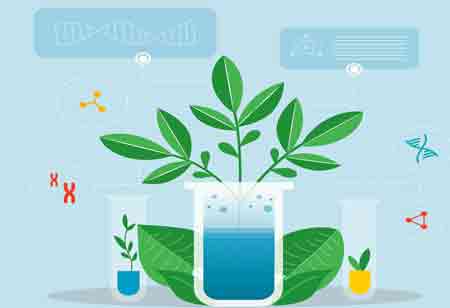FREMONT, CA: The chemical sector is crucial in creating a sustainable future by embracing low-carbon solutions to minimize environmental impact. Innovations in low-carbon technologies, including using renewable feedstocks, implementing energy-efficient processes, and adopting circular economy principles, are key drivers of this change. The initiatives are essential for fostering a cleaner, more resilient future while balancing environmental responsibility and economic development.
Techniques for Calculating the Carbon Footprint
The chemical industry employs several techniques to measure and analyse CO2 emissions, focusing on direct and indirect emissions, energy consumption, and product life cycles. These methods provide detailed insights into the environmental impact of industrial activities, enabling companies to identify opportunities for reduction and implement effective strategies to mitigate emissions.
Measuring Direct and Indirect Emissions
A fundamental approach involves quantifying both direct and indirect emissions. Direct emissions stem from the combustion of fossil fuels during production processes, while indirect emissions arise from the electricity used by facilities. Accurate measurement relies on gas analysis equipment, energy consumption records, and specific emission factors. This data allows for precise emissions calculations and a clearer understanding of their sources.
Calculating Emissions from Energy Consumption
Detailed records of electricity and fuel consumption across various processes are analysed to assess energy use emissions. Companies can estimate the CO2 released per unit of energy consumed by applying predefined emission factors for each energy source. This technique offers valuable insights, aiding in establishing tangible emission reduction targets and formulating actionable strategies to minimise the carbon footprint of energy use.
Life Cycle Assessment of Chemical Products
The life cycle assessment (LCA) evaluates the environmental impact of chemical products across all stages, from raw material extraction to final disposal. This comprehensive technique examines CO2 emissions, energy consumption, and other environmental factors associated with production, distribution, use, and end-of-life processes. LCA highlights areas for improvement and promotes the adoption of sustainable practices in chemical manufacturing.
Strategies for Reducing CO2 Emissions
Efforts to reduce CO2 emissions in the chemical industry revolve around optimising processes, adopting renewable energy, implementing advanced technologies, and embracing sustainable raw materials.
Industrial Process Optimisation: Optimising industrial processes is a crucial strategy for enhancing energy efficiency and reducing emissions. This involves analysing production stages to identify inefficiencies and implementing solutions to minimise material and energy waste. Measures include adopting advanced technologies, refining process times, and installing control systems for real-time monitoring and adjustment. These steps contribute significantly to lowering CO2 emissions while improving overall operational sustainability.
Adoption of Renewable Energy and Energy Efficiency: Transitioning to renewable energy sources, such as solar or wind, reduces dependency on fossil fuels and associated emissions. Simultaneously, energy efficiency measures, including optimised lighting systems and efficient heating or cooling technologies, decrease energy consumption. These approaches are pivotal in fostering a more sustainable and low-carbon chemical industry.
Advancing Carbon Capture and Recycling: Integrating clean technologies, such as carbon capture, provides an additional method for reducing emissions. By collecting CO2 generated during production and safely storing it, companies can prevent its release into the atmosphere. Furthermore, captured CO2 can be repurposed in other industries, such as fuel or material production. Recycling practices and sustainable raw materials support emission reduction by fostering resource efficiency and promoting a circular economy.
Adopting a circular economy framework enables the chemical industry to minimise waste and maximise resource utilisation. This includes designing recyclable materials, recovering valuable by-products, and implementing processes that support resource conservation. These practices contribute to both economic efficiency and environmental protection.
Transparency and Consumer Engagement
Building consumer trust through transparency is vital for promoting sustainability in the chemical industry. Companies should openly communicate their efforts to reduce environmental impact and demonstrate how their products align with a greener future. Raising consumer awareness fosters a shared commitment to environmental responsibility.
A Role in the Low-Carbon Economy
The chemical industry can play a transformative role in the global shift toward a low-carbon economy through innovation, collaboration, and adherence to sustainable practices. By reducing emissions and embracing sustainable development, the sector can contribute to environmental protection and ensure the well-being of future generations.
Collaborative efforts among stakeholders, combined with transparency and consumer engagement, further amplify the impact of these initiatives. As the industry continues to innovate and align with sustainability goals, it positions itself as a vital contributor to the global low-carbon economy, ensuring environmental resilience, economic growth, and a healthier planet for future generations.

